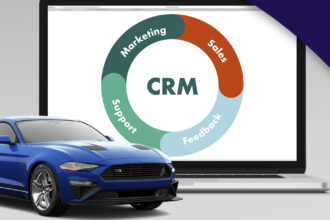Deciding when to part ways with your car can be one of the most challenging decisions for any vehicle owner. Whether it’s your first car that holds countless memories or a reliable family vehicle that’s served you faithfully for years, recognising when it’s time to say goodbye isn’t easy. However, continuing to invest in a vehicle that’s reached the end of its economically viable life can drain your finances and potentially compromise your safety.
The UK processes approximately one million vehicles through its scrapping system annually, with the average vehicle lifespan now reaching 14 years according to the Society of Motor Manufacturers and Traders. Understanding the critical indicators that signal when repair costs will outweigh the benefits of keeping your vehicle on the road can save you thousands of pounds in unnecessary repairs whilst ensuring you make a timely, financially sound decision.
This guide examines the five most reliable signs that your vehicle is ready for responsible recycling rather than continued investment, helping you navigate this important decision with confidence and clarity.
1. Repair Costs Consistently Exceed Your Car’s Value
The most straightforward indicator that it’s time to scrap your vehicle comes down to simple mathematics. When the cost of keeping your car roadworthy consistently exceeds its actual market value, you’ve crossed a financial threshold that makes continued ownership economically unsound.
The 50% Rule
Financial experts commonly reference the “50% rule” when evaluating vehicle repairs. This guideline suggests that if a single repair estimate exceeds 50% of your car’s current market value, scrapping becomes the more sensible financial option. For example, if your vehicle is worth £2,000 in good running condition and requires a £1,200 transmission replacement, you’re looking at a repair that represents 60% of the car’s total value.
This calculation becomes even more compelling when you consider that additional problems often emerge shortly after major repairs, particularly in older vehicles. The transmission replacement might solve the immediate issue, but other age-related components may fail within months, leading to a cascade of expensive repairs.
When Multiple Repairs Pile Up
Vehicle recycling experts recommend keeping a detailed log of all repair expenses, as this provides clear evidence of when a vehicle has become financially unviable. When annual repair costs consistently exceed 20% of your vehicle’s market value for two consecutive years, it typically signals that comprehensive deterioration has begun.
The true cost of keeping an aging vehicle extends beyond major repairs to include the hidden expenses of declining reliability. Frequent breakdowns lead to recovery service charges, alternative transportation costs, and the opportunity cost of time spent dealing with mechanical issues.
2. Your Vehicle Has Reached Critical Age and Mileage Thresholds
While modern vehicles are built to last longer than their predecessors, certain age and mileage milestones serve as reliable indicators that major expenses are imminent. Understanding these thresholds helps you anticipate when your vehicle is approaching the end of its economically viable life.
The Mileage Milestones
Research from the Vehicle Recycling Association indicates that vehicles face dramatically increased failure rates once they cross specific mileage thresholds. Between 120,000 and 150,000 miles, major components such as transmissions and suspension systems begin experiencing significant wear. The period from 150,000 to 180,000 miles typically sees engine components approaching the end of their design life.
Once a vehicle exceeds 180,000 miles, statistical data shows it becomes three times more likely to experience a major mechanical failure compared to vehicles under 100,000 miles. At this point, even well-maintained vehicles often require comprehensive overhauls that exceed their remaining value.
Age-Related Deterioration
Vehicle age impacts reliability through mechanisms that operate independently of mileage. After 10-12 years, rubber seals and gaskets begin deteriorating regardless of how frequently the vehicle is driven. Electronic systems start experiencing failures as circuit boards age and connections corrode.
Vehicles beyond 15 years face additional challenges from material fatigue and corrosion. Even in well-maintained examples, the constant exposure to temperature variations, moisture, and road salt takes its toll on structural components.
The Combined Impact
When vehicles cross both age and mileage thresholds simultaneously, the likelihood of multiple expensive failures increases exponentially. A 16-year-old vehicle with 190,000 miles faces the perfect storm of worn mechanical components, aging electronic systems, and deteriorating structural elements.
3. Repeated MOT Failures with Major Issues
The annual MOT test serves as an official assessment of your vehicle’s roadworthiness, safety, and environmental compliance. When your car begins failing its MOT repeatedly or fails on multiple major points, it’s often signalling that comprehensive deterioration has begun.
Reading the Warning Signs
A single MOT failure on routine maintenance items like bulbs or wipers is normal and shouldn’t cause concern. However, when your vehicle fails on multiple unrelated systems during the same test, it suggests that general deterioration has reached a critical point.
Pay particular attention to failures related to structural integrity, such as corrosion affecting load-bearing components, suspension mounting points, or safety-critical areas. These issues often indicate that the vehicle’s fundamental structure is compromised.
The Cost-Benefit Analysis
MOT failures become particularly significant when the estimated repair costs approach or exceed the vehicle’s market value. Unlike routine maintenance, MOT-related repairs are mandatory for legal road use, meaning you cannot simply defer these expenses.
Consider also that vehicles failing MOT tests on multiple major points often develop additional problems shortly after repairs are completed. The stress of addressing one structural issue can reveal weaknesses in related components, leading to a cycle of expensive repairs.
4. Structural Integrity Has Been Compromised
When your vehicle’s structural integrity becomes compromised, safety concerns often outweigh financial considerations in the decision to scrap. Unlike mechanical problems that affect performance and reliability, structural issues can directly impact your safety and that of other road users.
Rust and Corrosion Issues
Surface rust on body panels, whilst unsightly, rarely affects safety. However, rust that has penetrated through structural components like chassis rails, subframes, or suspension mounting points represents a serious safety concern.
Corrosion around seatbelt anchor points or within the vehicle’s safety cell can compromise crash protection, whilst rust affecting suspension mounting points can lead to sudden component failure. When structural corrosion reaches this level, proper repair often requires extensive welding work that exceeds the vehicle’s value.
Accident Damage Assessment
Modern vehicles are designed with sophisticated crumple zones and safety cells that sacrifice themselves to protect occupants during accidents. When these systems deploy as intended, they often cannot be properly restored to their original specifications.
Insurance assessors frequently declare vehicles with significant structural damage as Category S (structural damage) or Category N (non-structural damage) write-offs. Even when repairs are technically possible, hidden damage from significant impacts can affect critical safety components.
Safety-First Approach
When structural integrity issues are identified, the decision to scrap often transcends financial considerations. No amount of money saved on repairs justifies compromising the safety of yourself, your passengers, or other road users.
5. Major Mechanical Systems Are Failing
When critical mechanical systems begin failing, particularly in combination, it often signals that your vehicle has reached the end of its economically viable life. Unlike minor component failures, major system failures typically require substantial investment that exceeds older vehicles’ remaining value.
Engine Problems
Catastrophic engine failures represent some of the most expensive repairs possible, often requiring complete engine replacement or comprehensive rebuilding. Issues such as cracked engine blocks, thrown connecting rods, or severe timing chain failures typically result in repair estimates that exceed the vehicle’s total value.
Even when engine repairs are technically feasible, the labour costs involved make these repairs economically unviable for older vehicles. Additionally, engine problems often indicate that other major components may be approaching failure.
Transmission Issues
Transmission failures typically require replacement rather than repair due to the complexity involved. Complete automatic transmission replacement often costs between £1,500 and £4,000, whilst manual gearbox replacement usually exceeds £1,000 including labour costs.
For vehicles worth less than £3,000 to £4,000, transmission replacement rarely makes financial sense. The high cost of these repairs, combined with the likelihood that other age-related problems will emerge, makes scrapping the more prudent choice.
Multiple System Failures
Perhaps most telling is when multiple unrelated systems begin failing within a short timeframe. When electrical problems coincide with suspension issues, or when cooling system failures occur alongside transmission problems, it typically indicates that general deterioration has reached a critical point.
When three or more major systems develop problems within a six-month period, scrapping usually represents the most economical solution.
Making the Final Decision
When multiple signs point towards scrapping, the decision becomes clearer, but even a single significant indicator can justify this choice. The key lies in taking a holistic view of your vehicle’s condition, considering both current problems and likely future issues.
Financial considerations should include not just immediate repair costs but also the ongoing expenses of maintaining an aging vehicle. Factor in the opportunity cost of money spent on repairs that could be invested in a more reliable replacement vehicle.
Environmental responsibility also plays a role in this decision. Modern vehicle recycling processes recover approximately 85% of materials for reuse, making scrapping an environmentally sound choice when repairs are no longer economical.
Conclusion
Recognising when your vehicle has reached the end of its economically viable life requires honest assessment of both its current condition and likely future needs. The five signs outlined in this guide provide clear indicators that can help you make this important decision with confidence.
Remember that continuing to invest in a vehicle that’s reached this point often results in throwing good money after bad, whilst scrapping allows you to recover some value and move towards a more reliable transportation solution. When the signs point towards scrapping, acting decisively can save you significant money and frustration whilst ensuring your vehicle is disposed of responsibly.

















